
Do you have a question about the Yamaha TRACER 9 GT 2022 and is the answer not in the manual?
| Displacement | 890cc |
|---|---|
| Bore x Stroke | 78.0 mm x 62.1 mm |
| Compression Ratio | 11.5:1 |
| Fuel System | Fuel Injection |
| Transmission | 6-speed |
| Final Drive | Chain |
| Front Tire | 120/70ZR17M/C (58W) |
| Rear Tire | 180/55ZR17M/C (73W) |
| Wheelbase | 1, 500 mm |
| Minimum Ground Clearance | 135 mm |
| Wet Weight | 220 kg |
| Engine Type | Liquid-cooled, 4-stroke, DOHC, 4-valve |
| Maximum Power | 119.0 PS (87.5 kW) @ 10, 000 rpm |
| Maximum Torque | 93.0 Nm (9.5 kg-m) @ 7, 000 rpm |
| Front Suspension | Telescopic fork |
| Rear Suspension | Swingarm, (link suspension) |
| Front Brake | Dual disc, Ø 298 mm |
| Rear Brake | Hydraulic disc, 245mm |
| Seat Height | 810/825 mm |
| Fuel Tank Capacity | 19 liters |
Please read this manual and the “YOU AND YOUR MOTORCYCLE: RIDING TIPS” booklet carefully before operating this motorcycle.
Explains important symbols and notations used in the manual to distinguish key information.
Illustrates and identifies the location of important labels on the vehicle for user safety.
Owner's responsibilities for safe operation and pre-operation checks for safe riding.
Recommendations for rider gear to ensure safety and minimize injury during accidents.
Hazards of carbon monoxide poisoning and guidelines for safely adding cargo to the motorcycle.
Identifies and locates key components and features on the left side of the motorcycle.
Identifies and locates key components and features on the right side of the motorcycle.
Locates and identifies the primary controls and instruments on the motorcycle's handlebar and dashboard.
Details on activating, setting, adjusting, and deactivating the cruise control system.
Explanation of the D-MODE system and its different engine response control maps.
Explanation of the SUS-MODE system for automatic suspension damping force adjustment.
Details on the Traction Control System (TCS-MODE) and its settings.
Information on the quick shifter for clutch-less gear changes and its operating conditions.
Operation of the main switch, steering lock, and their different positions (ON, OFF, LOCK).
Description of left and right handlebar switches, including mode, cruise, hazard, horn, and signal switches.
Explanation of the various indicator and warning lights on the instrument panel.
How to access and navigate the settings menu for various vehicle adjustments.
Pre-operation checks for fuel level, lines, and hoses to ensure safe operation.
Pre-operation checks for front and rear brakes, including fluid level and pad wear.
Pre-operation checks for tires, wheels, and chassis fasteners.
Guidelines for the engine break-in period to ensure engine longevity and performance.
Step-by-step instructions for starting the motorcycle's engine safely.
How to shift gears and recommended shift points for acceleration and deceleration.
Explanation of why periodic inspection, adjustment, and lubrication are crucial for safety and efficiency.
Chart detailing general maintenance and lubrication tasks at specified intervals.
How to check engine oil level and procedures for changing engine oil and filter.
Importance of checking tire air pressure and condition before each ride.
How to check brake fluid level and the procedure for changing brake fluid.
Diagnostic charts to help identify and resolve common starting and running issues.
Advice on proper washing, cleaning, and polishing to maintain appearance and performance.
Instructions for storing the vehicle in a cool, dry place to prevent damage and corrosion.
Locating and recording vehicle, engine, and key identification numbers for registration and parts ordering.
Details of the limited warranty, emissions warranty, and customer responsibilities.
Information about Yamaha's optional extended service plan for added protection.

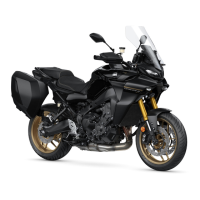
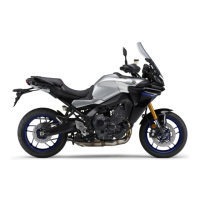
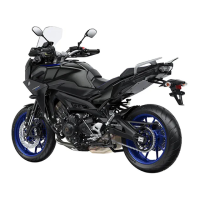
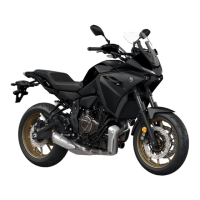
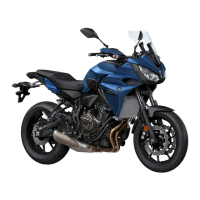
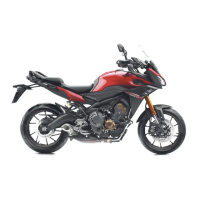

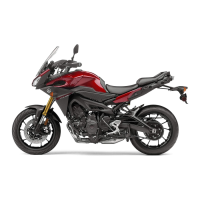

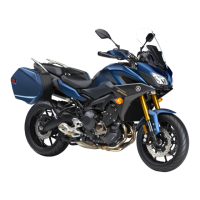
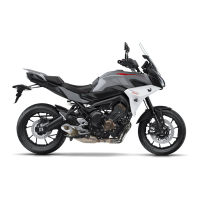
